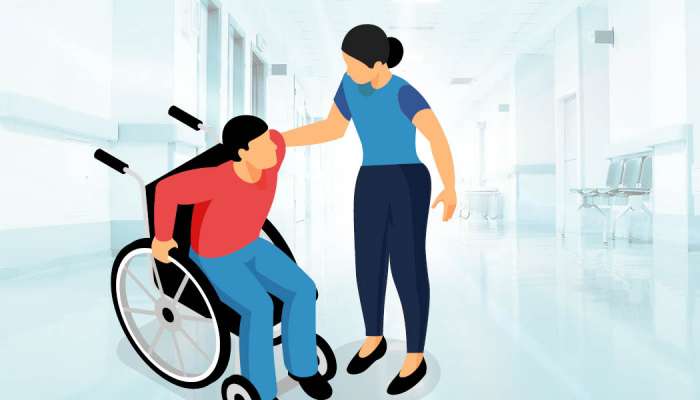
If you're a caregiver for a spouse or other family member at home, you already know how emotionally and physically challenging it can be. When you need to lift, turn or transfer a loved one to or from a wheelchair or bed, it can put added strain on your bones and joints.
Fortunately, certain lifting techniques and proper planning can help prevent injury when caring for others. The American Academy of Orthopaedic Surgeons (AAOS) offers these tips for assisting someone at home and improving the safety of their home environment.
Lifting Techniques
When you need to lift or move a person, take your time and be aware of your posture and movement as you follow these guidelines:
* Keep your head and neck in alignment with your spine; your head, neck and back should be as straight as possible.
* Bend using your hips and knees rather than from your back.
* Avoid twisting your body.
* Always keep the person who is being moved close to your body.
* Keep your feet shoulder-width apart to maintain balance.
* Use the muscles in your legs to lift and/or pull.
If the person is too heavy or in an awkward position, get help rather than continuing on your own.
Sitting up in bed
To move someone lying in bed to a wheelchair, first put the chair close to the bed and make sure to lock the wheels. If the person is not strong enough to push up to a sitting position with their hands, place one of your arms under their legs and your other arm under their back. Move the person's legs over the edge of the bed while pivoting their body, so the person ends up sitting on the edge of the bed. Keep your feet shoulder-width apart, your knees bent, and your back in a natural straight position.
Standing
If someone needs assistance standing from a sitting position on their bed, first position the person's feet on the floor, slightly apart. Face the person and place their hands on the bed or on your shoulders. Keep your feet shoulder-width apart, with your knees bent. Place your arms around the person's back and clasp your hands together. Hold the person close to you, lean back and shift your weight. Nurses, physical therapists and hospital workers often use lifting belts fastened around the person's waist to help with these types of movements. The caregiver then grasps the belt when lifting the patient. You can order one of these "gait belts" online, or find them at a home medical supply store.
Sitting down
To help someone sit down into a wheelchair, first ensure that the wheels are locked. Pivot toward the wheelchair, bend your knees and lower the person into the chair. Make sure the person has both their hands on the arms of the chair before you lower them down into it.
For additional help learning these techniques, discuss or practice them with your family member's physical or occupational therapist, if they have one.
To see illustrations for these movements, visit OrthoInfo.org.
Prevent accidents by evaluating your environment
It is also a good idea to make sure the home is clear of tripping hazards and arranged to improve accessibility. Consider securing area rugs to help prevent slips and use nightlights to illuminate all rooms for better visibility and clear pathways.